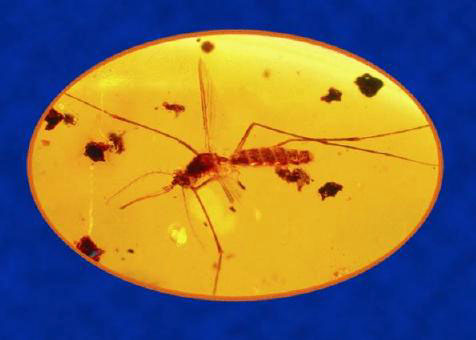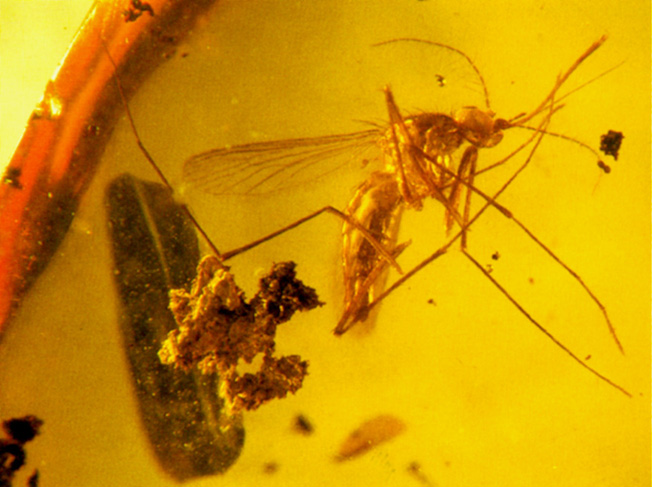B3 PRESERVATION IN AMBER:
The film, Jurassic Park, popularized the notion that viable dinosaur DNA could be recovered from fossil dinosaur blood contained in the fossilized bodies of contemporary mosquitoes or other blood-sucking insects. The idea here is that if, soon after biting a dinosaur, the mosquito had the misfortune to become encased in tree sap oozing from a crack in the bark of a tree upon which it had come to rest, dinosaur blood would be preserved along with the mosquito. This is because tree sap is an uncommonly stable material that upon fossilization converts to a very hard, resistant substance called amber. Disarrayed DNA and DNA by-products of fossil animals have in fact been recovered from just this sort of scenario.

The small tray labeled “Fossil amber” contains a small piece of amber recovered from Cretaceous sediments of the New Jersey coastal plain. We know from fossil discoveries that during the Cretaceous, what is now New Jersey contained a large and diverse population of dinosaurs. The amber is thus of the correct age and location to contain dinosaur DNA.
B3.1 Remove the amber pellet from its protective plastic case and examine it under the microscope. Return the pellet to its case when finished with your examination. Does it contain one or more fossilized animals?
YES ___________ NO __________
B3.2 If so, are they fossils insects?
YES ____________ NO ___________
B3.3 Are they mosquitoes?
YES ____________ NO ____________
B3.4 Do they look bloated, as if they might contain dinosaur blood?
YES _____________ NO _____________

Click here to go back to go back to Mode of Preservation
Department of Geology
Brooklyn College
Brooklyn, NY 11210